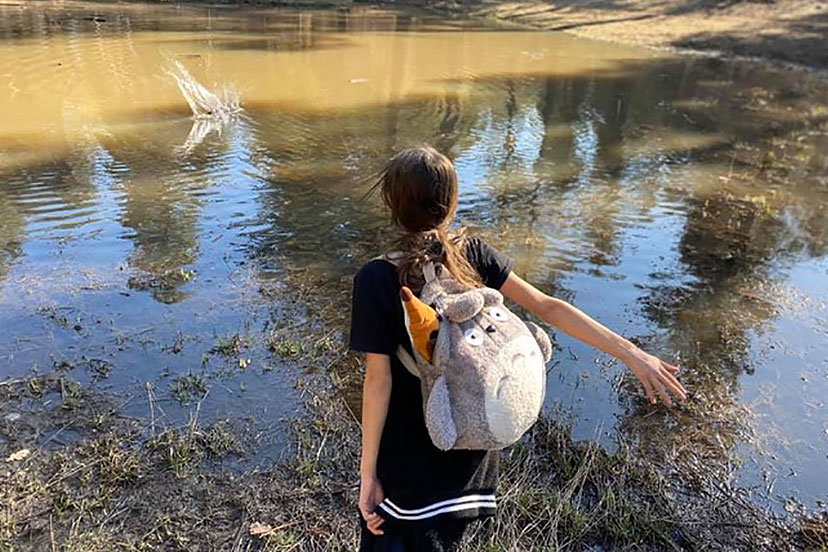On Friday, I shared a short excerpt from a letter, written by San Juan Water Conservancy District (SJWCD) president Candace Jones, and addressed to the Pagosa Area Water and Sanitation District (PAWSD) board of directors last month.
You can download the entire letter here.
The letter reflects an important philosophical divide between SJWCD and PAWSD, concerning one of Archuleta County’s most important resources: water.
In particular, the water in the San Juan River, and the technologies that deliver treated drinking water to our local homes and businesses.
And who pays the bills, for that delivery.
I’ve spent some time reviewing this letter, since I’m one of the PAWSD directors to whom the letter was addressed. Our board will be meeting for a special meeting on March 7 at 2pm, and I expect the SJWCD letter to be one of the agenda topics.
Disclosure: I currently serve as a volunteer member of the Pagosa Area Water and Sanitation District (PAWSD) board of directors, but this editorial reflects my own personal opinions, and not necessarily the opinions of other PAWSD board members or PAWSD staff.
As mentioned in Part One on Friday, PAWSD has an annual budget of about $48 million, funded mainly by Pagosa Springs businesses and households, with incidental contributions from the state of Colorado. That’s nearly as large an annual budget as the Archuleta County government (about $56 million), and much larger budget than the Town of Pagosa Springs’ budget (about $14 million).
The provision of drinking water is not an inexpensive proposition. Ditto, the treatment of waste water, the other half the water equation. And both are getting more expensive with each passing day… as the community learned when the PAWSD board approved its fee schedule for 2024.
I also mentioned, on Friday, that SJWCD does not provide water to customers, and has a relatively unimpressive annual budget: about $100,000.
SJWCD was created in 1989 — by the voters — to ensure that our community had enough reservoir storage to meet the needs of a growing mountain resort town.
So we come to a couple of central philosophical questions.
Does the Pagosa Springs community already have enough reservoir storage to accommodate growth over, say, the next 40 years? (Population growth has hovered between 1% and 2% over the past decade or so.)
If new reservoir storage is going to be created, who ought pay for it?
Back in 2003, when the idea of purchasing the Running Iron Ranch was being discussed publicly, the PAWSD and SJWCD boards shared many of the same board members and staff, and the two agencies functioned sort of like Siamese Twins. Without getting approval from the taxpayers and customers, the two agencies agreed to have PAWSD borrow $9.2 million to purchase of the 660-acre Running Iron Ranch, in the Dry Gulch valley, as the site for a future 32,000 acre-foot reservoir. That is to say, a reservoir about 20 times the size of Lake Hatcher, the current storage site for about half the community’s drinking water.
Apparently, the two boards believed, then, that Pagosa Springs would soon grow to 10 times its current size.
PAWSD customers are now paying, collectively, over $250,000 a year to pay off the debt created by the purchase of the Running Iron Ranch.
SJWCD is contributing zero dollars towards the loan repayment.
PAWSD has an obvious reason to exist. It supplies drinking water to about 10,500 current customers. Curiously, those 10,500 current customers are using less water than 7,500 PAWSD customers were using back in 2001. Our society as a whole has become more ‘water conscious’. Even the agriculture industry is becoming more careful with water. (The oil and gas industry, not so much.)
SJWCD, on the other hand, does not have an obvious reason to exist… if, in fact, the community doesn’t need another reservoir within the next 40 years of growth.
It’s not a comfortable feeling, I’m sure, serving on a board that may have no clear reason to exist, but still continues to spend $100,000 a year in taxpayer funding.
One more philosophical question. If we don’t need a reservoir at Dry Gulch within the next 40 years, could we use the 660-acre property in some other fashion to benefit the community?
I personally believe we can.
The SJWCD board seems to think otherwise.
From the SJWCD letter sent to the PAWSD board last month:
We also expect the PAWSD Board to act in a manner consistent with the reality that planning for the community’s long-term water future takes a sustained cooperative effort. Cooperation begins with practices like engaging with the SJWCD Board in regular discussions regarding shared interests. Arrangements for any use of the Running Iron Ranch need to be a product of joint negotiations involving PAWSD and SJWCD, each bringing our respective views.
The PAWSD Board’s recent practice of acting unilaterally regarding uses of the property undermines the ability of the SJWCD to focus on long-term development of the Running Iron Ranch. We waste valuable time and energy countering the perception that PAWSD alone can determine the future of the Running Iron Ranch and our community’s water resources.
It’s my personal opinion that SJWCD is wasting valuable time and energy — and taxpayer dollars — planning for a reservoir that is not currently needed, that is oversized, that the community has already voted not to support with a higher mill levy, and that has no obvious partners willing to provide the considerable financial resources that would be required to build a reservoir at this location.
Just my personal opinion.
If the SJWCD board would like to see more cooperation, maybe they can do a better job of cooperating with the customers who are paying off the $10 million debt on the Running Iron Ranch. A contribution of $100,000 a year on the debt payments would be a good starting place, for example.

